
Diaoyu Islands Propaganda
At the height of the furore between China and Japan over fishing rights to the uninhabited Diaoyu Islands there were mobs roaming the streets destroying Japanese restaurants and goods. People were so overcome with patriotism they were even destroying their own Japanese cars.
In the midst of this, we decided to go on a 5700km road trip through the backwaters of China with two Chinese friends and their Japanese car.
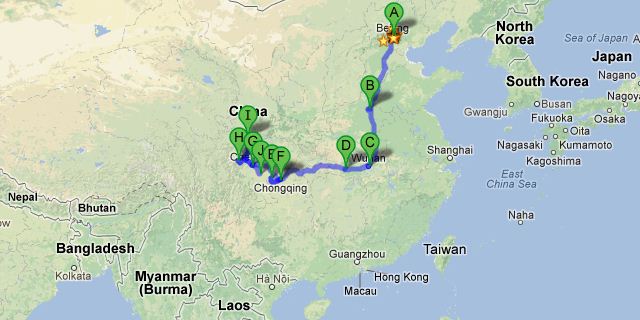
China Road Trip Map, heading south from Beijing
Here’s a quick primer on the dispute from the BBC and another from OnlineMBA.
Anti-Japanese sentiment in Beijing has been relatively muted, apart from constant protests outside the Japanese embassy. The main effect in our corner of Beijing has been that the local sushi restaurant has covered up its Japanese hoarding. The lack of Chinese patrons meant service was quicker than usual, so we were impelled to visit quite regularly.
The further we drove into the countryside the more Chinese flags and pictures of the Diaoyu Islands we spotted, including this violence-endorsing bumper sticker:
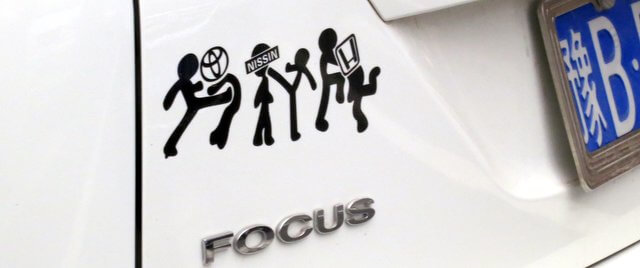
Anti-Japanese cars bumper sticker
Surely no-one would attack a car simply for being foreign…oh:
By the time we reached Kaifeng, some 700km south of Beijing, every shop, hotel and office had at least one flag hanging by the door. Driving through the narrow streets, every other Japanese car was adorned with Chinese flag stickers covering up all signs of their brand.
Given that Japanese car manufacturers dominate the market in China, somewhere there’s a man getting very rich by producing these Chinese flag stickers.
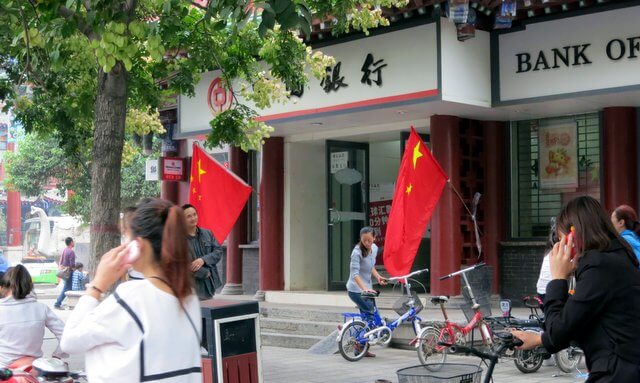
Chinese flags outside a bank
Weibo was awash with rumours that the crowds are spurred on by shadowy men, who do their best to stir up anger and incite violence…This is of course in no way intended to distract the general populace from the ongoing political leadership battles… No arrests have been made over destruction of property, including one man caught burning down a car factory. He lost hundreds of people their jobs, but was let off as he was ‘just being patriotic’.
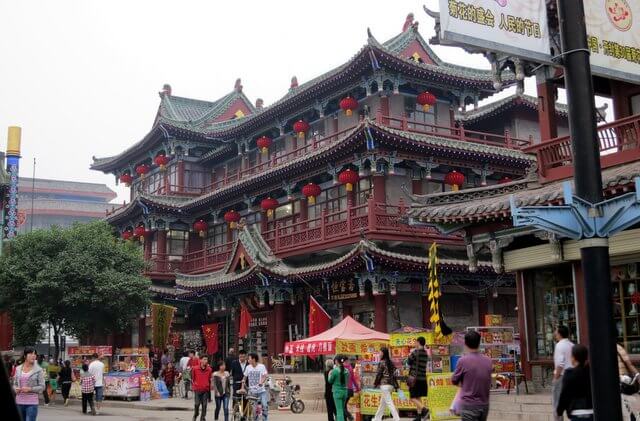
Imperial Street of Song Dynasty in Kaifeng
Kaifeng
Kaifeng is famous for three things. Once being the capital of China, the Kaifeng Jews and soupy buns.
Kaifeng was one of the Seven Ancient Capitals of China, along with Beijing, Nanjing, Luoyang, Xi’an, Hangzhou, Anyang and Zhengzhou. (To my count, that makes Eight Ancient Capitals, but nobody seems to mind).
The Jewish faith is very rare amongst Chinese, with no official estimates of numbers. The Kaifeng Jews were a small group that travelled to China from India or Persia about a thousand years ago. Today there are 400-500 Chinese Jews left in Kaifeng, still following Jewish customs.
Various sights in town include the Iron Pagoda, the Dragon Pavilion and the city walls and gates. I would have enjoyed visiting a few of these, but as soon as we stopped our friend got a little paranoid about the leaving the car unattended.
Being impossible to persuade him otherwise, we instead parked outside a famous soupy bun shop for lunch.
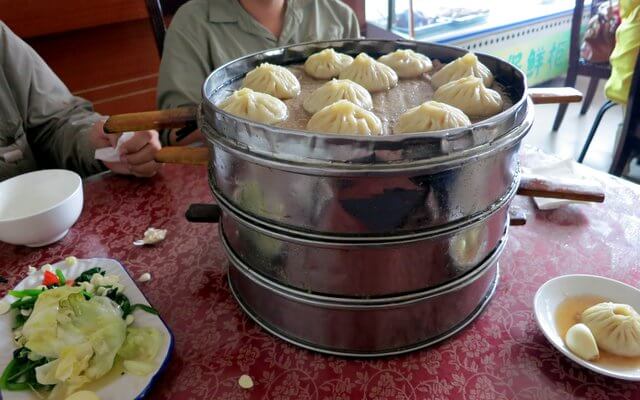
Kaifeng Soupy Buns…yes, we were hungry
Ducking under the Chinese flag hanging over the door we sat down at looked at the menu. It was quite a short menu, consisting solely of soupy buns.
Three trays of buns arrived, along with some spicy pickled cabbage, which seems to be a regional speciality.
Whilst we ate the suspiciously foaming meat, our friend snacked quickly then went outside for a smoke, disappearing off down an alleyway. When the rest of us finished lunch we emerged to find him applying far too many newly purchased Chinese flag stickers to the car.
Great, now I was driving round in the obviously Japanese Chinamobile.
Whilst this wasn’t ideal, every so often we’d pull over and get some annoyed stares, then the random foreigner would climb out and the annoyance would turn to confusion, then laughter.
This laughing and pointing amused our driving friend greatly, to the extent that I wondered if I could somehow roll his car over, and when the police arrive, claim I was ‘just being patriotic’.
Noticably, now the leadership transition is complete, the Diaoyu Islands have disappeared from the news and the fervent protesters went back to work in the Japanese factories.
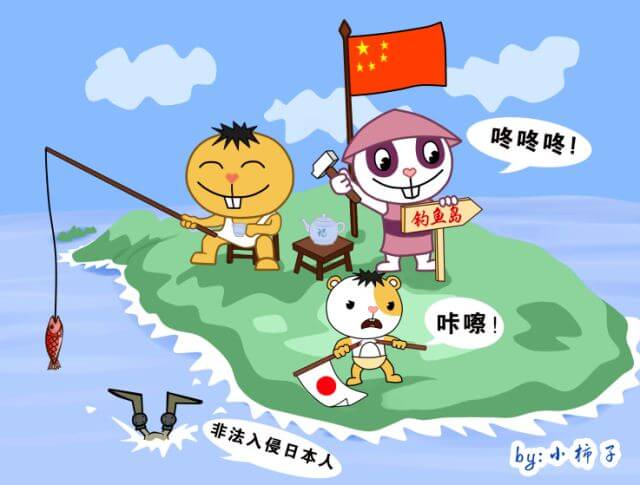
Anti-Japanese Diaoyu Propaganda for Kids

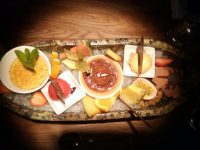
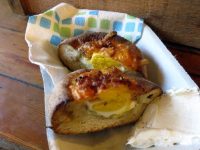
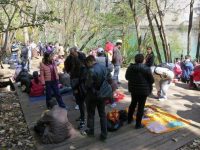






Pingback: Wendy & Sherry (@Kiboomu)
Pingback: @PrivateDayTrips
Pingback: Penny Sadler (@PennySadler)
Pingback: Dr. Jessica Voigts (@WanderingEds)
Pingback: Ashley Metcalfe (@SyrinxZA)
Pingback: Lisa Niver Rajna (@wesaidgotravel)
Pingback: Chris & Tawny (@CaptainandClark)
Haha good article, me and my wife (who is Chinese) were also joking about the Senshaku island issue because here in Guangzhou the interviewees on the Cantonese tv channels only spoke Putonghua (Mandarin) which clearly means they have better things to do as throwing over cars and feeling patriotic for something clearly ignited to direct the head from the ongoing politcal change in Beijing… Seriously… its so funny that at one point they were interviewing a girl who stopped in the midst of the interview to get some energy from her Yakult (which is eh… Japanese… by the way). Gotta love the billions of idiots on this planet that have no clue that they are being played from birth to death.
eh “they” meaning the local Cantonese people who speak Guangdonghua (Cantonese) of course…
The most amazing idea to me was the workers burning down their Japanese car factory and putting themselves out of work indefinitely. They’re now probably protesting about not being able to find a job.
The Soupy Buns are so good. The way they are made may offend western sensibilities, though. The chef adds a lot of pig skin to pork bone-stock, then refrigerates the stock, which then congeals because of the high collagen content, so that it can be used to fill the dumplings. Steaming the filled dumplings then turns the stock back to soup.
Taste heavenly tho….
Nothing wrong with a bit of pig skin – we eat Pork Scratchings in the UK, which is just deep-fried skin. I’ve grown quite partial to pig’s ears since coming to China. I’m sure I’ve eaten far worse along the way.